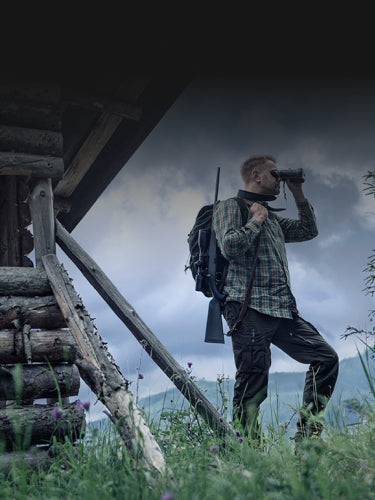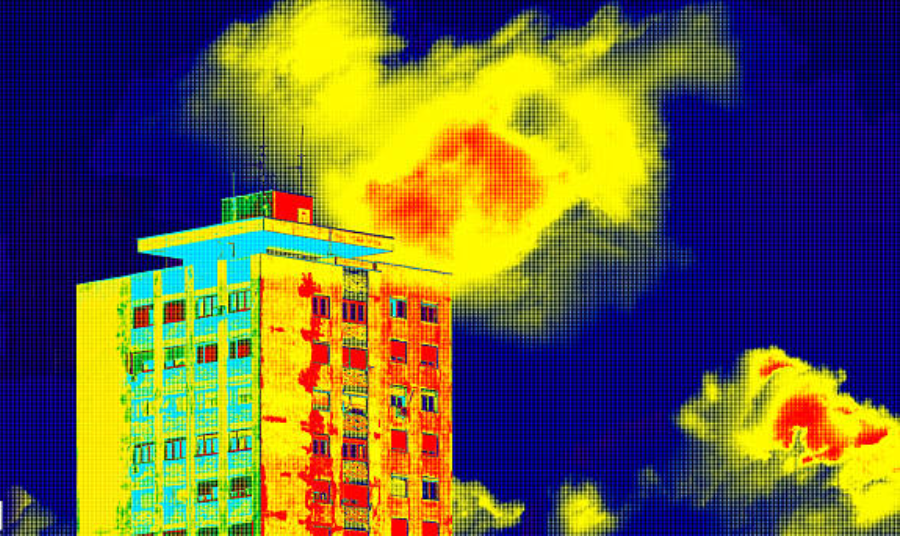Thermal imaging cameras or “TICs” are for more than just hunting. They’re also valuable for electricians and search and rescue personnel, particularly because they’re very good at seeing through materials like smoke and fog, which would normally obscure the naked human eye.
Here are some examples of how emergency services and first responders used thermal imaging to save lives and property:
- Fire department saves mobile home because of thermal camera
Back in 2003, the all-volunteer fire brigade of Williamstown, Vermont (population 3,331) received a federal grant. One of the essential pieces of equipment they bought with the grant money was a state-of-the-art thermal camera that featured a multi-color palette, which quickly proved to be a valuable asset to the fire department.
In 2004, the department responded to a fire in a mobile home. After the visible fires were put out, the firefighters scanned the site with their thermal camera to determine if there were other hidden fire hazards or embers which could reignite the flames.
This particular mobile home had a wooden frame roof installed above a metal roof. To the naked eye, everything would look safe and clear, but firefighters equipped with their thermal imaging cameras were able to detect an unusual amount of heat in between the two roofs and removed that section of the roof to save the rest of the building.
Second Assistant Chief Bill Ashe recounted, “Without a doubt, the embers eventually would have rekindled the fire and led to a total loss of the mobile home.”
- Terrorist found and arrested with a helicopter-mounted thermal camera

In April 2013, two brothers, Tamerlan and Dzhokhar Tsarnaev bombed the Boston Marathon with a homemade pressure cooker bomb, killing three and injuring about 264 people. After the success of their attack, the two Islamic extremists had spontaneously decided to attack Times Square but were cornered by police at Watertown, five miles away from the original site of the bombing.
A gunfight ensued, and officers from six different police departments opened fire on the two terrorists in an engagement where at least 200 rounds were fired and six explosive devices were lit up the 100 block of Laurel Street. In the confusion, the older brother Tamerlan ran out of ammo and was arrested. Dzhokar tried to stop his brother’s arrest by ramming into the officers with an SUV, but ran over his brother instead, killing him. Despite successful law enforcement actions in Watertown, Dzhokar was able to get away, and the nationwide manhunt continued.
Hours later, Watertown resident David Henneberry noticed that the tarp covering his parked boat seemed a little loose, and also noticed there was blood on it. He called the police, who arrived at the scene ready with a tactical team and a helicopter with a thermal camera.
The police helicopter trained its thermal imaging device on the boat and confirmed that a person with a heat signature was inside. The figure began poking at the tarp, which prompted police to open fire on the boat.
After a brief firefight, the badly wounded Dzhokar Tsarnaev was arrested and taken to hospital in critical condition. He is currently awaiting the death penalty.
Without interagency cooperation, the cooperation of local residents, and modern technology like the thermal camera, which allowed officers to verify their target and engage from a safe distance, Tsarnaev’s arrest would not have been possible.
- Wandering septuagenarian found with thermal drone
In Grant County, east of Seattle, the Hartline and Amira Volunteer Fire Department received a call from dispatch about a missing person.
Apparently, a 70-year-old man with dementia had wandered off into the woods in the middle of the night. The 911 call went out at 1:30 am, and the surrounding woods were pitch black, frustrating rescue personnel who conducted a search on the ground.
The search went on for two and a half hours and exterior temperatures dropped to 32° Fahrenheit. Rescuers knew they were racing against the clock – prolonged exposure to a man who was likely not dressed in winter clothing would most likely lead to him falling victim to hypothermia. To expedite the operation, rescue personnel released a drone equipped with a thermal camera to survey the search area.
The thermal drone found the man within just eight minutes. He was lying still in tall sagebrush, making it impossible for the ground search clue to locate him. With its white hot palette, the cold ground was displayed as dark gray on the thermal camera’s sensor, while the man showed up in bright white, contrasting sharply with the area around him
Rescuers were able to reunite the man safely with his family, and Grant County Sheriff Tom Jones says the rescue would’ve been impossible without the assistance of thermal technology.
FAQs
1. How can thermal imaging cameras be used by electricians?
Thermal imaging cameras can help electricians identify hot spots in electrical systems, which can indicate potential issues such as overloaded circuits or faulty wiring.
2. Are thermal imaging cameras only useful for firefighters?
No, thermal imaging cameras are also valuable for search and rescue personnel as they can see through materials like smoke and fog, aiding in locating missing persons.
3. How did a thermal camera help save a mobile home?
A thermal camera detected hidden heat between two roofs of a mobile home, allowing firefighters to prevent potential rekindling of flames.
4. How was a terrorist apprehended using a thermal camera?
A helicopter-mounted thermal camera located a suspect hiding in a boat after a terrorist attack, leading to his arrest.
5. Can thermal imaging cameras be used in law enforcement?
Yes, thermal cameras have been instrumental in locating suspects during manhunts and tactical operations.




